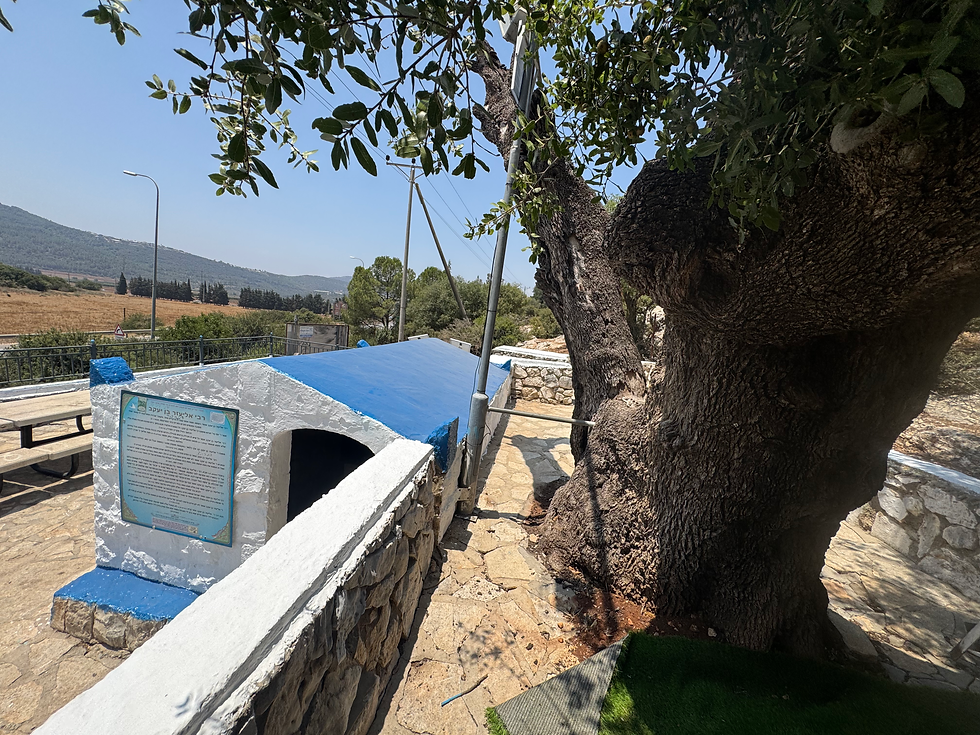
BH
🕯️ Rabbi Chalafṭa and His Sons – רבי חלפתא ובניו
Rabbi Chalafṭa was a Tanna of the fifth generation, a student of Rabbi Meir, and a father to several sons who were talmidei chachamim, including Rabbi Yose ben Chalafṭa, one of the most quoted sages in the Mishnah. Rabbi Chalafṭa is known for his deep value of communal learning and presence of the Shechinah, as seen in this teaching:
“עשרה שיושבים ועוסקים בתורה, שכינה שורה ביניהם” – “When ten sit and engage in Torah, the Shechinah dwells among them” (Avot 3:6).
He emphasized that the Shechinah does not just rest in the Beit HaMikdash, but wherever Torah is lived, learned, and shared—even in the simplest gathering.
His legacy is one of continuity—he didn’t just teach Torah; he raised sons who carried it forward. This is not just physical fatherhood—it’s spiritual parenthood: building others to stand strong in Torah.
North Prayer Trek
In the Zechut of
Yafit bat malka, Levana Bat Bilda, Sharone bat Synthia, Calob Ben Sharone and Isela bat Blanca, Kelsey and Cullen Ben Sharone, Martha bat Elizabeth, Emuna bas golda, Rachal Malka bas golda ,Raphael bat Donna, Sindee Gozansky, Matla bat Sara Basha, David ben Gittel, Shlomit bat Gittel, Matan David ben Miriam Rachel, James ben Ora, Freidel chaya bat sima Devorah/Ahud Ben Ofra/ Aaron Moshe Ben Freidel chaya/chana sheesha bat Freidel chaya/moshalah Shulamit bat Liba Devorah/yosef Elimelech Ben Moshalah shulamit, Avraham shmuel Ben Miriam Devorah And Rachel Bat Messoda, Yaakov ben Shterna Sara, Rivka Feige Bas Eta, Esther Malka bat Tamar, Alina Bat Pola, Jeanette daughter of Maria, Sima Sara rivka bas malka baila Fruma - Tzvi hirsch ben rivka, Chana bas Dvorah, Adiela bas Faiga, Faiga bas Chana , Avraham Ben Chava, Azriel Shmuel Ben Faiga , Haya Binah bas Faiga , Asher Yechiel Ben Faiga , . Misha Moshe Ben Chana , Ya’arah/Sarah, , Avraham Ben Chana, Rivka Bat Dinah, Maggie hodaya bat gila
David Chaim ben Miriam Miri, Albert Abraham berty ben marguerite Margo, Gila bat lily, Noam Liam ben gila, Lily Leah bat gila, Ashley shirel bat gila, Kelley rivka bat gila, Lily bat sarah, Chen Ben aviva, Ani Chana bat Judith, Miriam Chana Bat Zehava Chaya, Frieda Bat Shayndl , Dror Ben Frieda , Yitzhak Ben Frieda , Leib Eliyahu ben Yahel יהל Yehudit andLeah bat Chava Chaya , Daniel ben Leah , Chava Bracha bat Chava Chaya , Binyamin ben Chava Bracha , Liora bat Banafshe Juliette, Heleni Orna bat Chen Chana , Rafael Chaim Meir ben Sima Chasha , Ephraim ben yenta Freida (a”h), Rahel bat Esther Gittel (a”h), Moriah Tzofia Malka bat Rahel, Chaim Yisroel bat Rahel, Sophia bas priscilla , Jeremie Jay Ben Ileana , Makenzie bas ileana , Bethanie bas ileana, Ana bas ileana , Maisey bas Courtney , Asher Ben Courtney, Zohariel Masada bat Raphael , Shoshanna bas Bella, Benyamin Fischel Ben Shoshanna , Zachariah Moishe Ben Shoshanna , Gila bas Johanna, Johanna Bas Bella, Margie Shabat, Ilana Rahel bat Sara, Daniel ben Ilana Rahel ,Yaakov Pinchas ben Emuna Miriam, Daniella bas Atarah Malkah , Avigayil Chaya bas Atarah Malkah , Ahuva bas Atarah Malkah , Yael bas Atarah Malkah ,Amalia Shani bas Tamar.
HaShem help them attain all their hearts desires speedily with complete emuna, excellent health and success in all their endeavors. May all the hostages be released alive immediately, the war ends and there is continuous peace and safety for klal Israel. May all antisemitism cease.



